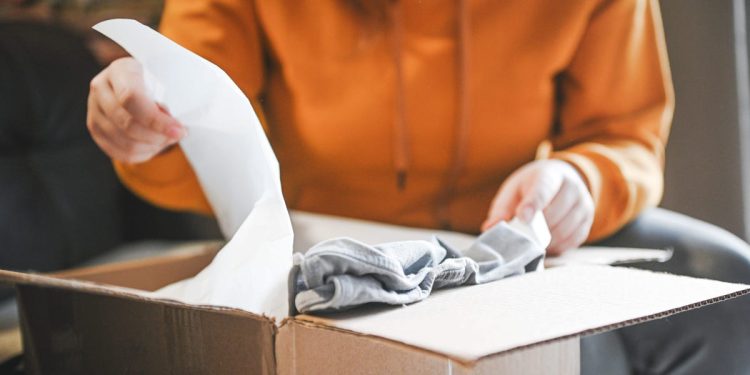- Some young consumers use flaws such as wardrobe and “digital shoplifting” to save money.
- These practices affect the results of retailers.
- Brands require stricter return policies and costs in some cases to combat the problem.
Some young consumers are trying to go further by taking advantage of retail sales such as returning items after having worn them once, using charging services on credit cards – or even claiming that they are n ‘did not receive the things they ordered.
In response, some retailers retaliate by imposing stricter policies and return costs.
“The yields are very expensive for brands – this is a huge part of their cost structure,” Michael Yamartino, road CEO, who works with some 13,000 brands to follow and ensure packages, told Business. . “If it is mistreated, it is easy for it to make the brand unsustainable.”
Flight to the digital age
Some consumers would have engaged in a practice entitled “Digital display flight”. They buy an online product which is delivered safely at their home, but they lie to the retailer and say that they have not ordered it, or claim that it has never arrived or has been stolen, marking a Refund for an item they keep.
They could also report the transaction to their credit card company and request an appeal to reimburse their money, while retaining the item.
Socure, an anti-fraud company, recently questioned 2,000 people and found that around half of generation Z and millennials which earned more than $ 100,000 per year said that they had stolen digitally during the last year. Righter customers could be more informed about banking and merchant policies and how to abuse them, a leader of the company told Fortune.
Inflation reaching heights and 40 -year interest rates which have for the first time have a 5% violation since the financial crisis made the screw on many households. Combined with digital marketing influencers with digital display such as economic hacking on social networks, and generous reimbursement policies among merchants can help explain the trend.
Serial returners
Yields are also a headache for retailers because it takes time and money to transport products in warehouses, assess their condition, issue reimbursements, reconnect and ship them to a new customer, or liquidate, Make a donation, recycle or dispose of it.
The National Retail Federation and Happy Returns, a UPS company, has planned in December that the value of yields in the United States would be $ 890 billion in 2024, the retailers believing that around 17% of purchases would be returned.
A previous NRF report revealed that the return rates for online purchases in 2023 were 17.3% – much higher than the rate of 10% for store purchases.
The “serial returns” in the United Kingdom refer goods worth nearly 7 billion pounds sterling (8.7 billion dollars) of articles per year, a report of Retail Economics and the Return Society Zigzag.
Yamartino on the road told Bi that the increase in online purchases from the pandemic meant an “increase in rate of return, in particular with young buyers”.
The report on the state of the 2024 road electronic commerce revealed that generation Z is the most likely cohort to engage in the “wardrobe” – buy items with the intention of returning them after the Having worn – with 40% of zoomers in a survey of 1,250 consumers saying that they would. Do it.
Social media also popularized purchasing features – showing several items that you bought in a store. Many of these articles can be returned after use.
“What we see is that people buy it, use it lightly, then turn it over,” said Yamartino. “So it’s just the right element, that’s exactly what they want, but they don’t want it so long.”
Many young consumers have grown up with social media stars, “so there are a lot of concerns about the image,” he added. “Using something like the wardrobe as a tactical can help you simulate it until you do it.”
The brands are fighting
In response, some companies have started to add tags or ribbons to the items to prevent them from being returned once worn or invoice customers if they too often refer items.
ASOS began to tell some customers last year that they could no longer place orders if they had made too often too often, the cup reported. The fashion retailer has also introduced return costs of £ 3.95 ($ 4.90) for certain buyers in the United Kingdom, unless they keep items worth more than £ 40.
The other retailers repressing repeated reimbursements include Oh Polly, Zara and Prettylittlehing.
Influencer Molly-Mae Hagues in a country campaign for the Joliet. Pretty little thing
It is a difficult balance to find as many consumers like to buy several items in online stores, because they are not sure of the dimensioning and do not want to be penalized for returns.
Route can help brands create profiles for customers, said Yamartino, so loyal customers are not assigned, and others are invited to pay a small amount in advance rather than high costs.
“It allows us to use the data we have on people to make the right decision concerning these purchases, and allows brands to protect themselves and help compensate for the cost of these return programs that become more and more Dear, “he said.
businessinsider


